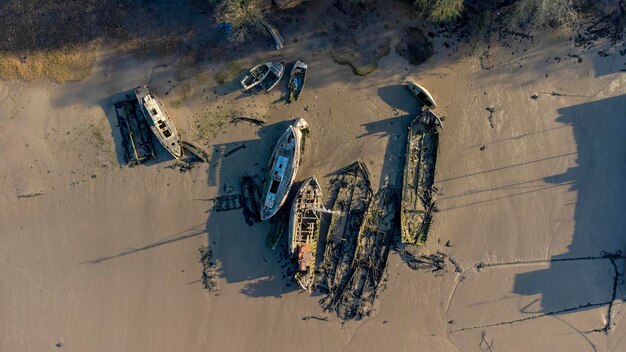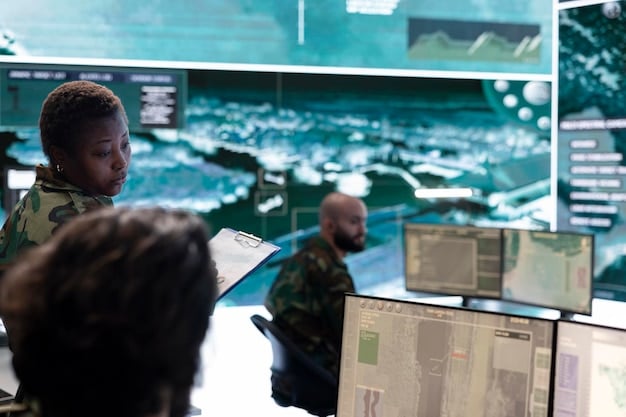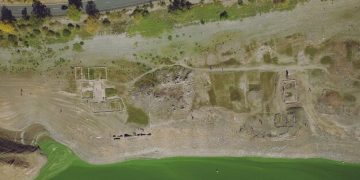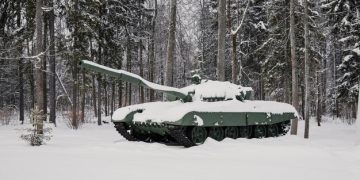Climate Talks & US Military: Global Impact & Future Security

The ongoing global climate change negotiations significantly impact the operational readiness and strategic posture of US military installations worldwide, demanding adaptive measures and long-term planning to mitigate escalating environmental threats.
The global discourse around climate change continues to intensify, with negotiations shaping international policy and national agendas. For the United States, a nation with extensive military presence globally, these discussions hold profound implications. Understanding the impact of the current climate change negotiations on US military installations worldwide is crucial, as environmental shifts directly affect infrastructure, operations, and strategic planning. This exploration delves into how these talks influence the Pentagon’s approach to global security, infrastructure resilience, and international cooperation.
The Evolving Threat Landscape for US Military Installations
The Department of Defense (DoD) has consistently recognized climate change as a significant threat multiplier, affecting military operations, strategic planning, and the well-being of service members. This acknowledgment is not merely environmental; it is intrinsically linked to national security. Rising sea levels, extreme weather events, and resource scarcity, all exacerbated by a changing climate, directly challenge the operational integrity of US military installations across the globe. From coastal naval bases to desert training grounds, the physical manifestations of climate change are becoming increasingly evident, demanding proactive adaptation and resource allocation.
The implications extend beyond mere infrastructure damage. Climate change can complicate humanitarian assistance and disaster relief (HA/DR) missions, increase instability in vulnerable regions, and even contribute to new geopolitical challenges. The military’s ability to project power, respond to crises, and maintain global stability hinges on its resilience to these evolving environmental threats. Current climate negotiations, while seemingly civilian-focused, directly influence the global context within which the US military operates, shaping the perceived urgency and direction of adaptation efforts.
Coastal Vulnerability and Sea Level Rise
Many significant US military installations are located in coastal areas, making them highly susceptible to sea level rise and intensified storm surges. This vulnerability poses immediate and long-term challenges.
- 🌊 **Naval Station Norfolk, Virginia:** One of the largest naval bases in the world, facing frequent inundation from rising waters and tidal flooding.
- 🏝️ **Kwajalein Atoll, Marshall Islands:** A critical missile defense test site, highly exposed to sea level rise due to its low elevation.
- 🌬️ **Tyndall Air Force Base, Florida:** Devastated by Hurricane Michael in 2018, demonstrating the destructive power of stronger storms fueled by warmer oceans.
Extreme Weather Events and Operational Disruptions
Beyond coastal threats, increased frequency and intensity of extreme weather events, such as heatwaves, droughts, and wildfires, challenge inland military operations and training.
Heat stress can severely impact training schedules, reduce equipment lifespan, and pose health risks to personnel. Prolonged droughts can lead to water scarcity, crucial for military bases and surrounding communities, potentially creating local tensions. Wildfires, especially in dry regions, threaten critical infrastructure and force evacuations, diverting resources and attention from core missions. These events underscore the urgent need for resilient infrastructure and adaptable operational protocols, influenced by the global scientific consensus emerging from climate negotiations.
The military’s strategic response to a changing climate is not new, but the pace and scale of adaptation continue to be informed by the latest scientific assessments and global policy shifts originating from international climate forums. The emphasis on data-driven decision-making, understanding global trends, and fostering international partnerships gains further traction as negotiation outcomes highlight shared vulnerabilities and responsibilities.
In essence, the military’s robust assessment of climate change’s threat ensures that global climate negotiations, even those not directly involving defense ministries, resonate deeply within Pentagon planning. These talks underpin the scientific understanding, establish international frameworks, and indirectly inform the funding mechanisms and resource allocation for climate resilience within the DoD.
Global Climate Negotiations: Policy and Process
Global climate negotiations, primarily conducted under the United Nations Framework Convention on Climate Change (UNFCCC), serve as the principal international forum for addressing climate change. These annual Conferences of the Parties (COPs) bring together world leaders, policymakers, scientists, and civil society representatives to establish targets, develop frameworks, and allocate resources for climate action. For the US military, understanding the policy trajectories and technological implications emerging from these talks is paramount.
Key Milestones and Their Impact
The trajectory of climate negotiations has seen various milestones, each shaping the global response. The 1997 Kyoto Protocol set initial emission reduction targets for developed countries, while the 2015 Paris Agreement marked a pivotal shift, introducing a universal, legally binding agreement that requires all nations to contribute to climate action. These agreements, and subsequent COPs, influence national policies, allocate financial aid, and promote technological advancements that can directly or indirectly benefit military adaptation efforts.
For instance, commitments made under the Paris Agreement to limit global temperature rise necessitate a shift towards renewable energy sources and sustainable practices. While primarily targeting civilian sectors, these transitions impact military energy consumption, logistics, and supply chains. A global move towards cleaner energy reduces geopolitical reliance on fossil fuels, a factor that has historically driven certain military deployments and strategic considerations. Furthermore, increased international cooperation fostered by these negotiations can translate into better data sharing, early warning systems for extreme weather, and collaborative disaster response mechanisms, all vital for military operations.
The US engagement in these negotiations, whether through active participation or observership, sends signals about its commitment to addressing global challenges. This engagement can affect alliances, perceptions of leadership, and the willingness of partner nations to collaborate on security issues that have climate dimensions. When the US demonstrates commitment at the diplomatic table, it reinforces its standing as a reliable partner in addressing complex, transnational threats, including those posed by climate change.
Technology and Innovation from Negotiations
- 💡 **Renewable Energy Integration:** Discussions on clean energy accelerate the development of microgrids and energy efficient technologies applicable to military bases.
- 🌍 **Climate Risk Assessments:** Frameworks developed for national climate assessments can be adapted for military installation vulnerability studies.
- 📊 **Data Sharing Protocols:** International agreements on climate data sharing enhance the military’s access to critical information for forecasting and planning.
The outcomes of these negotiations directly inform the global scientific understanding of climate change, influencing the predictive models and risk assessments used by the DoD. The collective knowledge generated helps the military anticipate future risks, fine-tune its climate adaptation strategies, and invest in appropriate resilience measures. Therefore, tracking the progress, setbacks, and new initiatives within these negotiations is an integral part of the US military’s long-term strategic foresight and planning for its global footprint.
Adaptation and Resilience Strategies on the Ground
In response to the escalating threats posed by climate change, US military installations worldwide are actively implementing a range of adaptation and resilience strategies. These efforts are not theoretical exercises but practical measures aimed at safeguarding personnel, infrastructure, and operational capabilities. The urgency of these initiatives is often underscored by, and sometimes directly influenced by, the scientific consensus and policy discussions that emerge from global climate change negotiations. The focus is on robusting existing structures, developing new technologies, and integrating climate considerations into daily operations and long-term planning cycles.
Infrastructure Modernization and Protection
A primary area of focus for adaptation is the modernization and protection of physical infrastructure. This includes hardening buildings against extreme weather, elevating critical assets in flood-prone areas, and improving drainage systems. For example, bases like Joint Base Charleston in South Carolina are investing in seawalls and green infrastructure to manage rising tides and stormwater runoff. Innovations in building materials and construction techniques are also being explored to ensure that new and renovated facilities can withstand future climate pressures.
Beyond individual structures, there’s a broader emphasis on creating self-sustaining and energy-resilient installations. This involves deploying microgrids, diversified energy sources, and energy storage solutions to ensure uninterrupted power supply, especially during natural disasters. Such initiatives not only reduce reliance on vulnerable external grids but also align with broader national and international goals for energy independence and emissions reduction, often discussed and promoted in climate negotiation forums.
Operational Adjustments and Training
Adaptation extends beyond physical infrastructure to operational adjustments and personnel training. Military readiness is being re-evaluated in the context of extreme heat, prolonged droughts, and altered landscapes. Training exercises are increasingly incorporating simulated climate impacts to prepare forces for diverse environments. This includes developing new doctrines for operating in extreme heat, managing water scarcity, and responding to complex humanitarian crises exacerbated by climate change.

For instance, training ranges might need to be adjusted during periods of high heat, or considerations for water purification and supply become more critical in arid environments. The aim is to ensure that while the physical infrastructure is resilient, the human element—the service members—are also equipped to operate effectively and safely under novel environmental conditions. These adjustments require continuous assessment and integration of climate science, much of which is refined and disseminated through global climate change discussions.
Ecosystem-Based Adaptation
- 🌳 **Mangrove Restoration:** Protecting coastal bases in tropical regions by restoring natural barriers against storm surges.
- 💧 **Wetland Preservation:** Utilizing natural wetlands to filter water and absorb excess rainfall, reducing flood risks on installations.
- 🌿 **Dune Reinforcement:** Fortifying natural sand dunes to protect beachfront installations from erosion and sea level rise.
Furthermore, many installations are engaging in ecosystem-based adaptation, leveraging natural systems to enhance resilience. Restoring mangroves, preserving wetlands, and reinforcing natural dune systems can provide cost-effective and environmentally sound protection against coastal erosion, storm surges, and inland flooding. These natural solutions not only protect military assets but also contribute to broader environmental conservation goals, mirroring the holistic approaches championed in international climate dialogues.
The collective impact of these adaptation and resilience strategies is to create a more robust and responsive US military, capable of fulfilling its mission despite the growing challenges posed by a changing climate. The constant feedback loop between on-the-ground experiences, scientific advancements, and international policy shifts ensures that these strategies remain dynamic and effective.
Funding and Resource Allocation Challenges
The implementation of climate adaptation and resilience measures on US military installations worldwide requires substantial financial investment and careful resource allocation. These challenges are often amplified by the scale of the global military footprint and the diverse environmental conditions faced by various bases. Moreover, the political landscape surrounding climate action, influenced by the outcomes of international negotiations, directly impacts the availability and prioritization of funds.
Budgetary Pressures and Competing Priorities
Securing adequate funding for climate resilience often places additional pressure on already constrained defense budgets. The DoD must balance climate-related investments with other critical priorities, such as modernization of equipment, personnel costs, and ongoing operational needs. While climate change is acknowledged as a national security threat, allocating sufficient funds to address it can be a contentious issue, subject to political debate and varying perceptions of urgency.
International climate negotiations, by emphasizing the economic costs of inaction and the benefits of proactive investment, can provide a rhetorical and policy framework that supports increased funding for climate resilience within national defense budgets. However, turning these international agreements into tangible, allocated funds for specific military installations remains a complex domestic political process. The challenge lies in translating broad climate mandates into actionable funding lines within the defense budget, often requiring sustained advocacy from military leadership and policymakers.
Strategic Investments and Cost-Benefit Analysis
To optimize resource allocation, the DoD is increasingly employing strategic investments and conducting rigorous cost-benefit analyses for climate adaptation projects. This involves identifying the most vulnerable installations and critical assets, prioritizing measures that offer the greatest return on investment in terms of sustained readiness and reduced future damage. For example, investing in a seawall now might prevent billions in reconstruction costs later after a major storm.
The discourse within climate negotiations often highlights the economic advantages of early adaptation versus reactive recovery, providing a compelling argument for upfront investment. Financial mechanisms discussed at COPs, such as climate funds and green bonds, while typically focused on developing nations, can influence the broader financial ecosystem and the availability of capital for climate-related projects, even in advanced economies. The US military, while not directly accessing these international funds, benefits from the global shift towards valuing and financing climate resilience.
Public-Private Partnerships and Innovation
- 🤝 **Shared Infrastructure Development:** Collaborating with local utilities to create resilient energy grids that benefit both military bases and civilian communities.
- 🧪 **Research and Development:** Partnering with private sector companies to develop innovative solutions for resilient infrastructure and energy efficiency.
- 💲 **Financing Mechanisms:** Exploring new financing models, such as public-private partnerships or performance-based contracting, to fund climate adaptation projects.
To bridge funding gaps and foster innovation, the military is increasingly exploring public-private partnerships. Collaborations with academic institutions, industry leaders, and local communities can bring new expertise, technologies, and co-funding opportunities for climate resilience projects. These partnerships allow for shared risk and leveraging external resources, diversifying the funding streams beyond direct congressional appropriations. Such cooperative models align with the multi-stakeholder approaches often advocated in global climate forums, reinforcing the idea that addressing climate change requires a collective effort from all sectors of society. Ultimately, the effectiveness of climate responses at military installations is deeply intertwined with the ability to navigate complex funding landscapes and harness diverse financial resources.
Geopolitical Implications and International Cooperation
The influence of climate change negotiations extends far beyond the physical realm of military installations, deeply impacting global geopolitics and shaping the landscape of international cooperation. For the US military, these shifts present both challenges and opportunities in maintaining alliances, responding to humanitarian crises, and projecting influence in a world increasingly grappling with environmental instability. The way nations approach climate action, and their adherence to international agreements, directly impacts their relationships and the potential for collective security responses.
Climate as a Driver of Instability and Conflict
Climate change is widely recognized as a threat multiplier, exacerbating existing geopolitical tensions by contributing to resource scarcity, mass migration, and economic disruption. Regions already prone to conflict may become more unstable as populations vie for diminishing water or arable land. The US military, therefore, must consider these dynamics in its strategic assessments and contingency planning. The outcomes of climate negotiations, particularly regarding adaptation funding and emissions reductions, play a critical role in mitigating these instability factors globally.
When international cooperation falters on climate issues, it can strain diplomatic relations and undermine multilateral institutions. Conversely, successful climate agreements can foster trust and create platforms for broader cooperation on shared security concerns. The military’s role in humanitarian assistance and disaster relief (HA/DR) operations, for example, becomes increasingly critical in climatesensitive regions, necessitating seamless coordination with international partners and non-governmental organizations.
Strengthening Alliances Through Climate Action
US engagement and leadership in climate negotiations can reinforce strategic alliances and partnerships. By demonstrating a commitment to addressing shared environmental threats, the US can strengthen its credibility and encourage reciprocal action from allies. Many countries view climate change as a paramount security concern, and collaboration on resilience and sustainable practices can become a cornerstone of bilateral and multilateral defense relationships. This includes joint research, shared intelligence on climate risks, and coordinated responses to climate-induced disasters.

The military-to-military exchanges and exercises increasingly incorporate climate change scenarios, building interoperability and mutual understanding of climaterelated security challenges. For example, joint exercises might focus on HADR operations in scenarios of extreme weather or food insecurity, enhancing the collective capacity to respond to complex crises. This collaborative approach, often spurred by the urgency highlighted in global climate talks, strengthens the overall security architecture against climate threats.
Diplomacy and Soft Power Projection
- 🌱 **Green Diplomacy:** Utilizing climate resilience initiatives as a form of soft power, demonstrating US commitment to global sustainability and security.
- 🤝 **Capacity Building:** Assisting partner nations in developing their own climate adaptation strategies, enhancing regional stability.
- 🏛️ **Multilateral Engagement:** Participating actively in international forums to shape climate policies and promote shared security objectives.
The US military’s efforts in climate adaptation and resilience also project significant soft power. By championing sustainable practices, investing in green technologies on its bases, and assisting allied nations with climate-related security challenges, the US enhances its global standing. This “green diplomacy” can win hearts and minds, building goodwill and long-term partnerships that are invaluable for geopolitical influence. Such initiatives demonstrate a foresight in security planning that resonates with international partners facing similar climate vulnerabilities. The outcomes of global climate negotiations therefore directly influence the strategic environment for the US military, making active engagement and informed adaptation indispensable for maintaining global stability and projecting influence.
Future Outlook and Strategic Imperatives
Looking ahead, the interplay between global climate change negotiations and the operational realities of US military installations worldwide is poised to intensify. The scientific consensus on climate change continues to firm, and the imperative for comprehensive action will likely become even more pressing. For the US military, this translates into a series of strategic imperatives focused on continuous adaptation, innovation, and proactive engagement with both domestic and international partners. The future military landscape will undoubtedly be shaped by environmental shifts, requiring dynamic and flexible strategic planning.
Continuous Adaptation and Innovation
The concept of “set and forget” does not apply to climate adaptation. US military installations will need to embrace continuous learning and innovation. This involves regularly updating climate risk assessments, investing in cutting-edge resilience technologies, and integrating climate considerations into every aspect of military planning, from procurement to personnel training. The pace of environmental change demands agile responses, and relying on outdated strategies will not suffice.
Future climate negotiations may introduce new targets, technologies, and accountability mechanisms that will further influence military planning. For instance, advancements in carbon capture technologies or geoengineering research, while controversial, could eventually impact global climate trajectories and, by extension, the long-term environmental context for military bases. The military’s research and development arm must remain attuned to these scientific and technological shifts, exploring their potential applications for defense and resilience.
Enhanced Data Integration and Predictive Analytics
A critical future imperative is the enhanced integration of climate data and the sophisticated use of predictive analytics. Understanding not just current impacts but also future climate scenarios at granular levels will be essential for effective planning. This includes better forecasting for extreme weather events, more accurate projections of sea level rise, and detailed analyses of resource availability in various geopolitical contexts. Leveraging artificial intelligence and machine learning to process vast datasets will be key to developing robust predictive models.
The global climate science community, often supported by resolutions and funding mechanisms from international climate negotiations, will continue to provide critical data and models. The military’s ability to access, interpret, and integrate this information into its operational planning will be a significant determinant of its future readiness and resilience. This requires investment not only in technology but also in human capital – training personnel to understand and utilize complex climate intelligence.
Building a Climate-Resilient Defense Ecosystem
- 🌐 **Global Resilience Networks:** Developing interconnected systems of resilient bases and supply chains globally.
- 🧑🤝🧑 **Cross-Sector Collaboration:** Deepening partnerships with government agencies, private industry, and academic institutions on climate solutions.
- ⚖️ **Policy Advocacy:** Championing policies that prioritize climate resilience within defense budgets and national security strategies.
Ultimately, the strategic imperative is to build a comprehensive climate-resilient “defense ecosystem.” This encompasses not just individual bases but also the entire logistical supply chain, the readiness of the force, and the interoperability with allies and partners. It requires a whole-of-government approach, where the military’s climate efforts are seamlessly integrated with broader national and international climate policies. Active participation in, and thoughtful consideration of the outcomes from, global climate change negotiations will be foundational to achieving this resilience. The future success of US military installations worldwide hinges on their ability to adapt and thrive in a world irrevocably altered by climate change, making proactive engagement with the climate discourse an enduring strategic necessity.
| Key Aspect | Brief Description |
|---|---|
| 🌍 Climate Threat | Rising sea levels and extreme weather directly threaten military infrastructure and operations. |
| 🤝 Negotiation Impact | Global climate talks influence policy, resource allocation, and international cooperation for military adaptation. |
| 🏗️ Resilience Efforts | Bases are implementing infrastructure hardening, energy resilience, and operational adjustments. |
| 💰 Funding Challenges | Funding climate initiatives competes with other defense priorities, necessitating strategic investment. |
Frequently Asked Questions About Climate Change and Military Impact
Global climate negotiations shape international policy and scientific consensus, which in turn inform the US Department of Defense’s threat assessments and adaptation strategies. They influence resource allocation, drive technological innovation for resilience, and set the stage for international cooperation on climate-related security issues, directly impacting operational planning and readiness worldwide.
Key threats include sea level rise and increased storm surges impacting coastal bases, extreme temperatures affecting training and equipment, and altered precipitation patterns leading to droughts or floods. These phenomena challenge infrastructure, operational capabilities, and personnel health, requiring significant adaptation measures across the global military footprint.
Adaptation strategies include hardening infrastructure against extreme weather, elevating critical assets, improving drainage systems, and developing energy-resilient microgrids. Operational adjustments, such as modifying training schedules for extreme heat, and embracing ecosystem-based solutions like wetland restoration, are also crucial components of these comprehensive efforts.
Public-private partnerships are pivotal for leveraging external expertise, technology, and funding to enhance military climate resilience. Collaborations with industry, academia, and local communities help develop innovative solutions, share infrastructure costs, and explore new financing models, strengthening the overall defense ecosystem’s ability to adapt to environmental changes.
Climate negotiations influence global stability by addressing threat multipliers like resource scarcity and migration, which can exacerbate conflicts. US leadership in these talks strengthens alliances by demonstrating commitment to shared global challenges, fostering cooperation on security issues, and projecting soft power through climate resilience initiatives, thereby shaping diplomatic and military relationships.
Conclusion
The intricate relationship between global climate change negotiations and the resilience of US military installations worldwide underscores a profound shift in national security paradigms. These ongoing discussions, while often focused on civilian policy, serve as a critical framework that informs the Department of Defense’s strategic planning, resource allocation, and operational adaptations. As the physical impacts of climate change intensify, from rising sea levels to more frequent extreme weather events, the imperative for robust and continuous adaptation at military bases becomes ever more urgent. The ability of the US military to maintain its global readiness and effectively project power will increasingly depend on its proactive engagement with climate science, its commitment to innovative resilience strategies, and its leadership in fostering international cooperation within the evolving geopolitical landscape.





